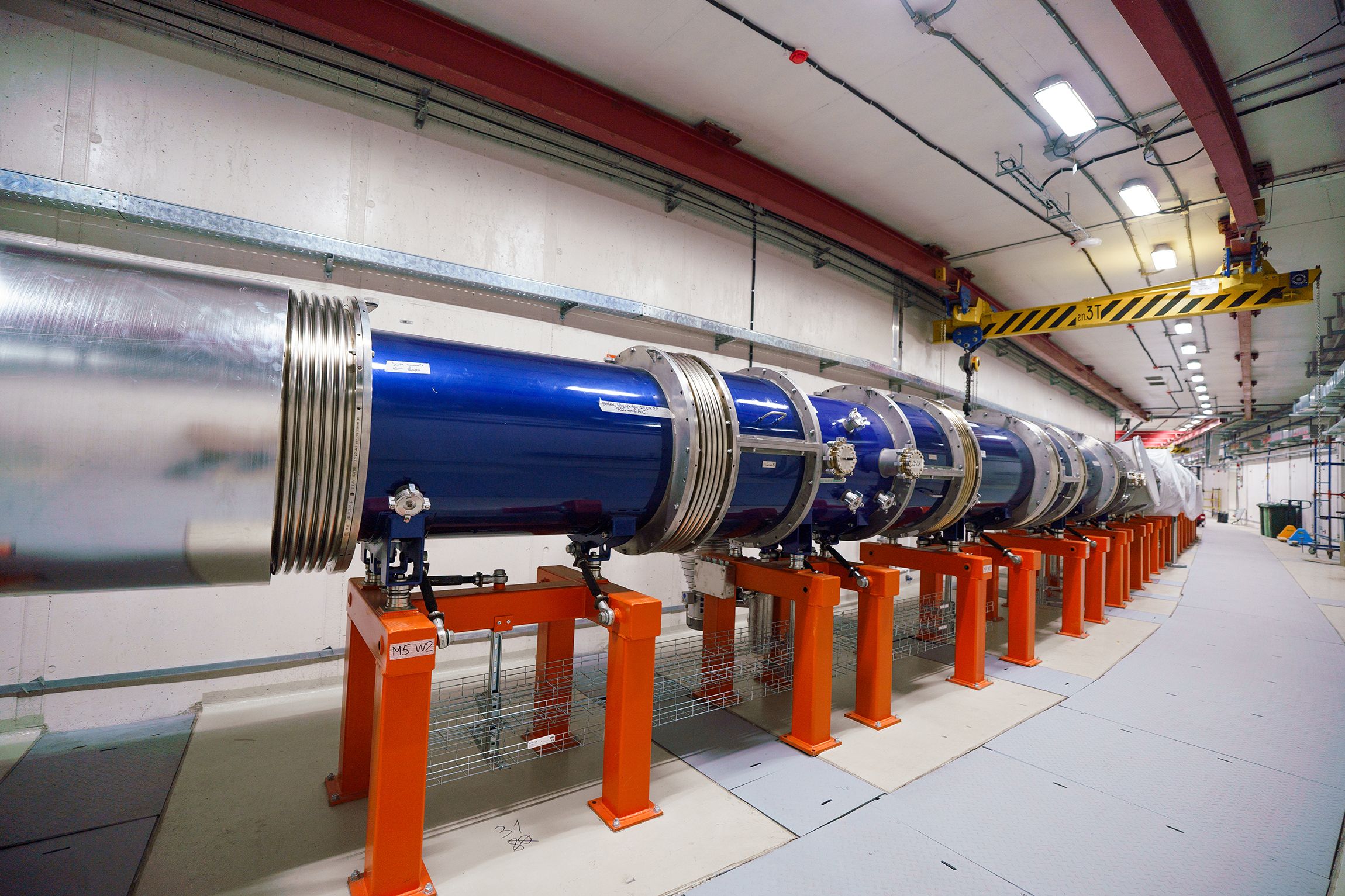On energy of pion collisions at NICA
News, 26 August 2024
A team of scientists from VBLHEP at JINR and three Mexican higher education institutions, including National Autonomous University of Mexico, Autonomous University of Sinaloa, and University of Colima, studied collision energy dependence of source sizes for primary and secondary pions at energies available at the JINR Nuclotron-Based Ion Collider Facility from Lévy fits.
The researchers study the evolution of the two-pion correlation function parameters with collision energy in the context of relativistic heavy-ion collisions within the NICA energy range. To this end, the authors perform UrQMD simulations in the cascade mode to produce samples of pions from 5 × 106 Bi+Bi collisions for each energy studied. The effects of the quantum-statistical correlations are introduced using the correlation afterburner code CRAB.
The scientists fit the correlation function using Gaussian, exponential, and symmetric Lévy shapes and show that for all collision energies the latter provides the best fit. They separate the sample into pions coming from primary processes and pions originating from the decay of long-lived resonances and show that the source size for the latter is significantly larger than for the former. The source size for the secondaries is similar but in general larger than the size for the whole pion sample. To further characterise the pion source, the researchers also simulate the effects of a non-ideal detector introducing a momentum smearing parameter, representing the minimum pair momentum and thus a maximum source size that can be resolved.
The values of the correlation function intercept parameter are therefore modified from the values they attain for the perfect detector case. Using the core-halo picture of the source, the scientists show that the values of the intercept parameter are influenced by the presence of a significant fraction of core pions coming from the decay of long-lived but slow-moving resonances.
These findings serve as a benchmark to compare with future Monte Carlo studies that consider an Equation of State and thus allow for a phase transition within the studied energy domain.
The European Physical Journal A published an article on this study last June. Authors: Alejandro Ayala, Santiago Bernal-Langarica, Isabel Dominguez, Ivonne Maldonado, Maria Elena Tejeda-Yeomans.
